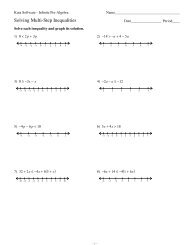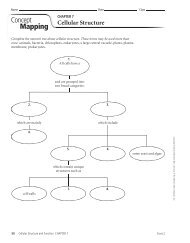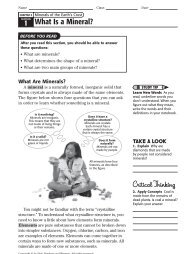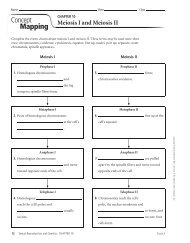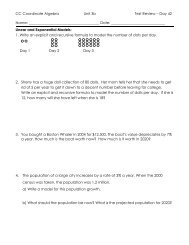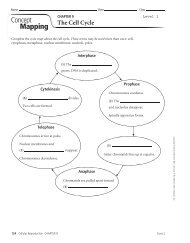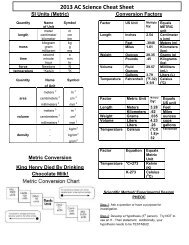Heat_Capacity - Cobb Learning
Heat_Capacity - Cobb Learning
Heat_Capacity - Cobb Learning
You also want an ePaper? Increase the reach of your titles
YUMPU automatically turns print PDFs into web optimized ePapers that Google loves.
PhyzSpringboard:<strong>Heat</strong> <strong>Capacity</strong>OBSERVATIONS AND CONCLUSIONS1. Consider two samples of water at room temperature. Both samples havethe same mass.a.If more heat were added to one than to the other,the temperaturewould rise more in___the sample to which more heat was added.___the sample to which less heat was added.b.From this observation,we would conclude that the change intemperature of an object being heated is___directly proportional to the amount of heat added to the object.___inversely proportional to the amount of heat added to the object.c .Write this proportionality using symbols.2. Consider two samples of water at room temperature. One sample islarger than the other.a.If the same amount of heat were added to both samples,thetemperature would rise more in___the larger sample___the smaller sample.b.From this observation,we would conclude that the change intemperature of an object being heated is___directly proportional to the mass of the object___inversely proportional to the mass of the object.c .Write this proportionality using symbols.3. The water is emptied from both beakers.Then 300 grams of ethyleneglycol (antifreeze) is poured into one beaker and 300 grams of mercury ispoured into the other.Both are given the same amount of energy from thehot plate.a.The mercury’s temperature is observed to rise more than that of theantifreeze.Both samples have the same mass and the same amount ofheat was added to both.Why did the temperature change more in onethan in the other?The Book of Phyz © Dean Baird.All rights reserved.8/16/04 db
.Write a proportionality that incorporates this new quantity.PUTTING IT ALL TOGETHER1. Write an equation for the change in temperature of an object when it is heated.2. What are the units of specific heat?QUESTIONS1.Consider two samples of water at room temperature.Both samples have the same mass.But oneundergoes a greater change in temperature than the other.Explain using words and diagrams.2. Consider two samples of water at room temperature. The same amount of heat was added to thetwo samples.But one sample underwent a greater change in temperature than the other.Explainusing words and diagrams.3. Consider two samples of water at room temperature. More heat was added to one sample than tothe other.But both samples underwent the same change in temperature.Explain using words anddiagrams.4. Consider a sample of antifreeze and a sample of mercury.Both samples have the same mass.Butwhen heated,both experience the same increase in temperature.How can this be? Explain usingwords and pictures.The Book of Phyz © Dean Baird.All rights reserved.8/16/04 db




